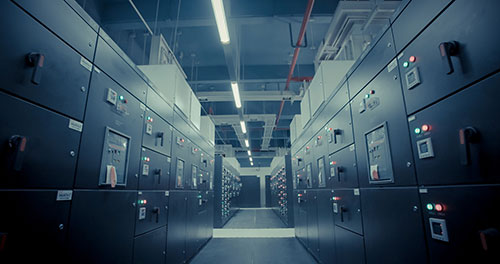Humidifiers are invaluable systems for helping maintain a controlled humidity level for any indoor environment. Whether it is for residential use in homes and offices, or commercial use in data centers and laboratories, humidifiers are very much needed in many different ways.
The sole purpose of humidifiers are to add moisture to the room. The different methods of doing this are through warm mist and cool mist, with humidifiers built to cater to each process. Although both are built to control the effects of dry air, there are many different pros and cons between the two types. However, before we can jump into that, we must first understand what are the processes that produce the warm or cool mist.
Isothermal vs. Adiabatic Humidification
Isothermal Humidification – Warm Mist Cooling
Warm mist humidification uses an internal heating element that boils the water inside before releasing it. The mist that is produced through this process is often quite soothing. These types of humidifiers are often considered healthier because the isothermal (constant temperature) process kills waterborne bacteria and mold, which prevents them from escaping out into the world.
Isothermal humidification utilizes heat energy to generate steam and distribute it into an air stream or directly into a room. Due to the nature of the process requiring constant temperature, a higher expenditure of electricity will be used to ensure that the humidifier is running.

Adiabatic Humidification – Cool Mist Humidification
With adiabatic humidification, the process is quite the opposite of isothermal. Rather then having the contribution of thermal energy from external sources, adiabatic humidification uses the heat that is already in the air. This process uses the energy found in air to evaporate the molecules, which results in the cooling of air.
There are two major types of adiabatic humidifiers – evaporative and ultrasonic. Evaporative humidifiers works by allowing the water that sits in its reservoir to flow to a wick filter. Once there, a fan will blow out a cool mist that was transformed by the water.
With ultrasonic humidification, the systems uses vibration technology to break down water into small droplets, which then transforms into cool mist.
To read and learn more about the differences between these two processes, check out this article here at: http://www.humidification.ca/education/humidification-side-by-side.php. This article will help detail the processes between the two, and how they compare with one another.

Pros and Cons of Isothermal and Adiabatic Humidification
Warm Mist Cooling
Pros
1. This type of humidification system is normally much more quiet because it does not come with a built in fan.
2. Can slightly warm up a room if it is cold.
3. Can be purchased in smaller, portable sizes for single rooms/offices.
Cons
1. Higher uses off electricity due to more heat being used.
2. Not recommended to be used around children. The water inside the humidifier can get to a boiling hot temperature, which poses a serious hazard for children.
3. Regular check ups and cleaning maintenance is required.
Cool Mist Cooling
Pros
1. Requires less electricity than warm mist cooling, so electric bills are significantly lower.
2. Safe around all ages. Cool mist cooling does not pose any serious threats from children up to adults.
3. Can also be purchased in smaller/portable sizes.
Cons
1. More subject to bacteria and growing mold. This means regular check-ups are highly recommended.
2. Filters must be replaced regularly, especially for evaporative humidifiers. This is due to the particles collected by the fan inside the system.

When To Use Either Systems
Both humidification systems come in different sizes for different uses. Typically smaller units are used in residential or single office rooms, where larger systems are used in hospitals, data centers, walk-in humidors..etc.
For residential/office settings, cool mist humidifiers are typically used for those who have asthma or strong allergies. This can also include cold-flu symptoms, which is coughing, sore throats, sneezing, and congestion the purified air that emits from the unit can make it a whole lot easier to breath inside the comforts of an individual’s home. However, warm mist humidifier is used for the same exact reason too. It is up to the individual to determine which is more difficult to breath in (cold vs warm air). If warm mist humidification is too much for them, it is suggested to swap to cool mist.

When it comes to larger scale commercial usages, cold mist humidifiers are much more common.
Due to the nature of vaporizing and ultrasonic humidification, the mist that emits from the system covers a much larger area. Hence, uses for larger scale operations are much more common.
However, the use in commercial settings is much more different than residential. With residential usage, it is mostly to help with individual needs, like control of asthma. Commercial usages are more to control the longevity of equipment, whether it is for lab machines, data center servers, or cigars in a walk-in humidor.

If interested, click here to read about how Ultrasonic Humidification Benefits Cigars in Walk-in Humidors, or check out our other article on How to Prevent Damages to Labs with Ultrasonic Humidification.
Conclusion
There are many reasons for the use of either cool mist or warm mist humidifications. Whether an individual is looking for a system that provides clean breathable air, or keep a surgery room free from static electricity and airborne bacteria, humidification systems are the definite answer. These systems were designed and produced with one purpose in mind – to produce clean air for any given space. It is up to the individual to decide what purpose it is for. From that, they can make the right calls into if they need cool mist or warm mist humidification.
If you or your company are in need of cool mist humidification, please reach out to us at info@ultrapuresystems.com, or submit a contact form so we can answer any of your questions. At UltraPure Systems, we provide ultrasonic humidification systems that can be used in any settings. Our units can range from the smallest size to fit into a single office space, or our standard size that can fill out an entire data center. Just let us know what your situation with humidification is, and we can help you with the best of our ability to find the right system for you.